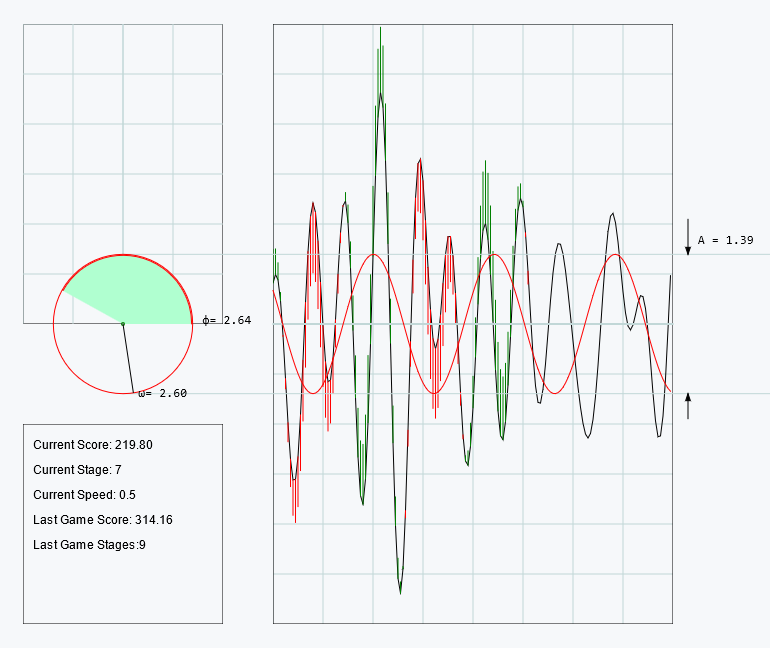As a game concept, Tetris gave humanity nearly four solid decades of engagement, but with the possibility for only seven possible puzzle pieces it might seem a little bit limiting. Especially now that someone has finally beaten the game, it could be argued that as a society it might be time to look for something new. Sinusoidal Tetris flips these limits on their head with a theoretically infinite set of puzzle pieces for an unmistakable challenge.
Like Tetris, players control a game piece as it slowly falls down the screen. Instead of blocks, however, the game piece is a sinusoid that stretches the entire width of the screen. Players control the phase angle, amplitude, and angular frequency in order to get it to cancel out the randomly-generated wave in the middle of the screen. When the two waves overlap, a quick bit of math is done to add the two waves together. If your Fourier transformation skills aren’t up to the task, the sinusoid will eventually escape the playing field resulting in a game over. The goal then is to continually overlap sinusoids to play indefinitely, much like the original game.
While we’re giving Tetris a bit of a hard time, we appreciate the simplicity of a game that’s managed to have a cultural impact long after the gaming systems it was originally programmed for have become obsolete, and this new version is similar in that regard as well. The game can be quite addictive with a lot to take in at any given moment. If you’re more interested in the programming for these types of games than the gameplay, though, take a look at this deep-dive into Tetris for the NES.

















More like Trig-Tris. Or Fouriertris.
It’s addictive!
This is just begging to be played on ye olde fashioned analog oscilloscope.
The Brick Game machines [1] were never limited to 7 pieces, even the earlier models.
Later models were not even limited to Tetris, lol!!
[1] https://pt.m.wikipedia.org/wiki/Brick_Game
Professional Tetris (yes, you read that right) has only gotten more exciting since the recent wins. Now there are speedruns to get to the first possible endgame, and a challenge to make it further than what is the first of many known endgames.
Oh joy!
Another game for me to be lousy at playing.
Reminds me of a certain notorious puzzle from Myst IV…try moving the slider!
That was the game that had me stuck for 8+ hours because you couldn’t walk through a particular patch of grass without knowing you had to push it aside first. Not how it works in the real world, of course.
Right now the game is pretty broken. Just omega–, A++ then phi++ to ~270° will effectively always substract on the entire function. The author himself mentions the “alternating phase” strategy as game breaking… With a bit of randomness, it might be an interesting game though.
Also Wavelets might be a more interesting option. Or even simple gauss kernels.
Some fixes were applied. First of all, you can actually win the game (and get to see a winning screen) if you manage to bring the signal decently closer to zero.